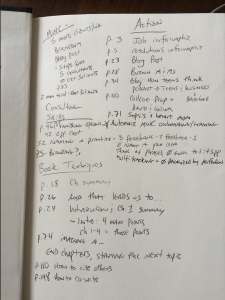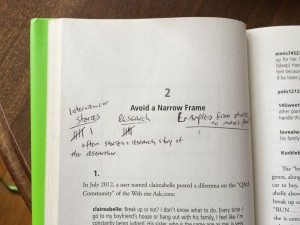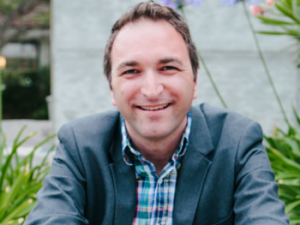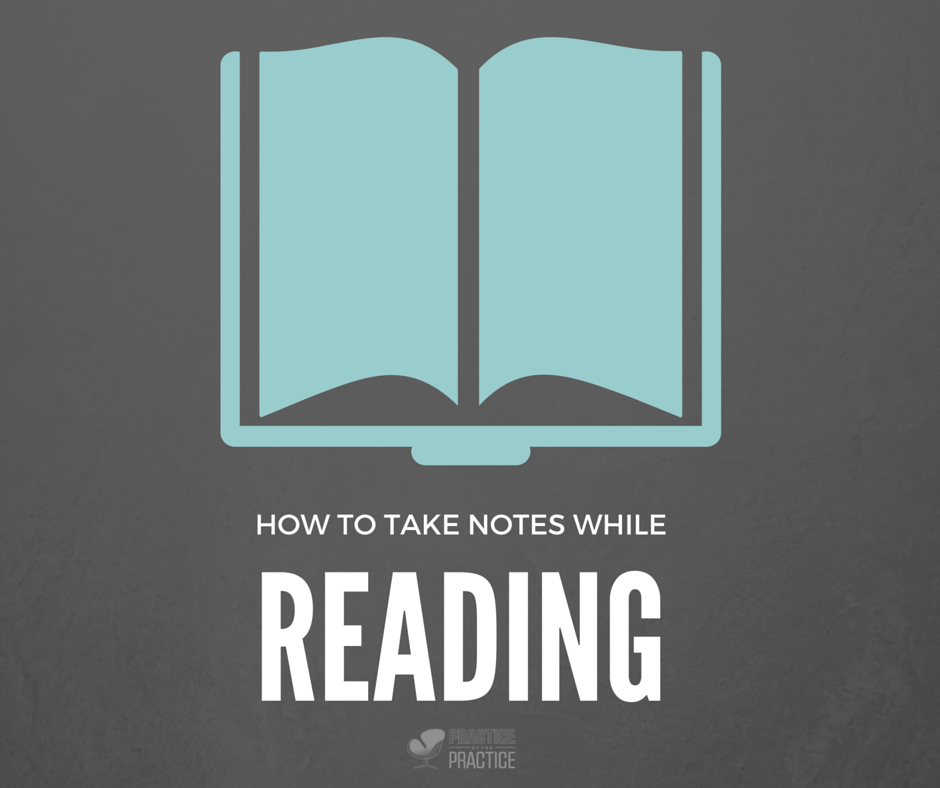It was the end of my work week and I got in a conversation about book notes. Amy Fortney-Parks and I were talking about growing her consulting business through speaking and writing a book and we started to talk about how to take notes while reading. Amy’s practice has been booming and she continues to look at how to level-up.
As we talked, I mentioned that in the book Talk Like TED: The 9 Public-Speaking Secrets of the World’s Top Minds, the author discusses how the top TED Talks typically have about 40% stories, 40% research, and 20% connecting the dots, using those stories and research as the examples.
“How do you keep track of all the things you learn in books?” Amy asked me.
“It’s easy I just…” I walked through the exact formula I use.
“That’s brilliant! You have to write a blog post about that!” she said.
It’s easy when you know how
In 2008, my wife and I had Yong Ki live with us. He’s a college graduate that moved to the United States for a year from Korea to master English. As a young couple, it helped to have some money for rent and we got to know a different culture through Yong Ki. He loved Honey Bunches of Oats for breakfast, when he didn’t eat Ramen. We frequently came home to him watching Top Gun. He pointed out all the flaws in our language, saying, “That rule doesn’t make sense, why is it that way?”
To which we’d say, “I don’t know, that just how we say it.”
One day I was cooking stir fry and made rice on the stove. Yong Ki watched in amazement. “How do you know how to make rice without a rice cooker?”
“I don’t know, I just do.”
Yong Ki said, “It’s easy when you know how.”
Isn’t that true? When we think about what we know, we just know it. But when you don’t know it, it seems a monumental task. Think about building your own computer, changing your brakes, or installing a furnace. It’s easy for people that know how, but I would have no idea how to do that!
I wanted to keep track of what I was reading, so I just did it. I never thought of it as “book notes” or “How to take notes while reading a book.” I never thought anyone would find it “brilliant.” So here it goes.
The system for keeping track of your reading with book notes
I’ve read a number of books lately:
- Decisive: How to make better choices in life and work
- Talk Like TED: The 9 Public-Speaking Secrets of the World’s Top Minds
- David and Goliath: Underdogs, Misfits, and the Art of Battling Giants
- Conscious Millionaire: Grow Your Business by Making a Difference
- The Power of Habit: Why We Do What We Do in Life and Business
- To Sell Is Human: The Surprising Truth About Moving Others
- Essentialism: The Disciplined Pursuit of Less
- The ONE Thing: The Surprisingly Simple Truth Behind Extraordinary Results
- How the World Sees You: Discover Your Highest Value Through the Science of Fascination
You can read and read, but if you don’t take planned action and change what you are doing, it does not matter!
What are you getting out of your reading?
 First, you need to start with your goals for reading. Here are my goals:
First, you need to start with your goals for reading. Here are my goals:
- Get ideas on how to grow my practice, Mental Wellness Counseling
- Become a better, smarter consultant, by increasing my toolbox
- Observe concepts in writing that are common among New York Times best-selling books, so that I can write one someday
- Get new ideas for content from other people’s ideas
So why do you read non-fiction? Create columns on the first blank page regarding what you want to get out of it. For example, in the photo to the left, you’ll see that I have my goals, then a page number and then a 1-3 words. When I go to that page, I have spent more time on the idea through writing more, underlining, or connecting concepts.
What I do within the book
Within the book itself, I use codes so it’s easy to remember what I was thinking.
 Here are some examples:
Here are some examples:
- Box around a word or phrase: This is a symbol of a definition. For example: A return on investment is a way to understand how the investment of time or money will come back to you in a larger sum than the original time or money. I would draw a box around the words “return on investment.”
- Brackets: I use [brackets] for bigger concepts to theories. I then number the points next to them, underline the main point and somethings even connect them with lines.
An example might be:
When planning a a [keynote] there are three specific things to keep in mind. Most new keynote speakers do not practice enough. Make sure you take time to practice out loud so that you have your talk memorized (1). Secondly, they don’t chunk out there talk. Chunking a talk (2) is when you have cards in your mental deck. It might be the story about mayonnaise that is the concepts of symbols that leads into the research about guinea pigs in Peru, and then ends with the story about when you pooped in Nepal. Lastly, only use PowerPoint to enhance your talk. Never use it as a prompt for your notes, instead, it should make a concept more clear because it adds a visual component (3) or something unique. You don’t want people reading and listening.
In this situation I have underlined the most important parts and I might even connect them with lines or put numbers in the sidebar.
- Comments: Lastly, I will write quick comments or questions, such as “What would this look like in private practice?” In consulting I might reframe this as…” or “Blog post that also includes that YouTube video about rainbows.”
Next steps
As you take book notes, you never know what will inspire you later. I no longer lend out books, instead I buy someone a book, my notes are too valuable at this point to lose. Also, I keep all of my business books in the same place, so I never have to hunt for inspiration. If ideas from the book keep coming to the top of my mind, I add it to my “someday” list in my notes section of my iPhone.
Having a system for keeping track of ideas, makes it easier to know what to do with five or 50 extra minutes, because instead of looking at a blank screen, you have a huge list of potential ideas.
 Joe Sanok
Joe Sanok
Joe Sanok is an ideas guy. He’s small scale, with a big mindset. He’s working on his book “Small Scale, Big Mindset” which he hopes will be a springboard into a New York Times bestseller. Joe is a keynote speaker, and small business consultant with a focus on marketing and sales funnels that are authentic.
Joe is a counselor and owner at Mental Wellness Counseling in Traverse City.

